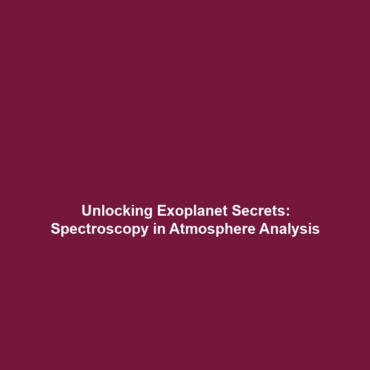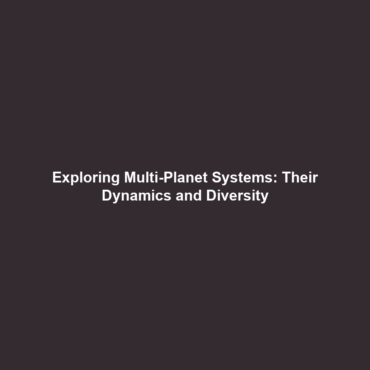TRAPPIST-1 System: Overview of the Seven Earth-Sized Planets
Introduction
The TRAPPIST-1 system is a remarkable discovery in the field of exoplanets, housing seven Earth-sized planets orbiting a cool dwarf star located just 40 light-years away from Earth. This groundbreaking find, announced in 2017, has significant implications for our understanding of planetary formation, habitability, and the potential for extraterrestrial life. With three of these planets positioned in the star’s habitable zone, TRAPPIST-1 offers a unique opportunity for future studies focused on the conditions that may support life beyond our solar system.
Key Concepts
Understanding the TRAPPIST-1 System
The TRAPPIST-1 system consists of the following key concepts:
- Earth-sized Exoplanets: All seven planets share similarities in size and mass with Earth, making them prime candidates for habitability studies.
- Habitable Zone: This region around stars where conditions are just right for liquid water to exist. In TRAPPIST-1, 3 of the 7 planets fall within this zone.
- Transit Method: The primary technique used to discover these planets by observing the dimming of starlight as the planets pass in front of their host star.
Applications and Real-World Uses
The TRAPPIST-1 system has significant applications in exoplanet research:
- Astrobiology: The TRAPPIST-1 planets help scientists understand possible life-supporting conditions outside Earth.
- Planetary Habitability Studies: Research on TRAPPIST-1 aids in developing models that predict habitable zones for other stars.
- Technological Advancements: The pursuit of understanding TRAPPIST-1 has led to improvements in observational technologies and data analysis techniques used in astronomy.
Current Challenges
Despite its significance, the study of the TRAPPIST-1 system faces several challenges:
- Data Limitations: Accurate characterization of the atmospheres of these planets is hampered by current observational technology.
- Planetary Interactions: The gravitational interactions between multiple planets can complicate their orbits, making predictions difficult.
- Lack of Direct Observations: We have yet to directly image the planets, limiting our understanding of their surface conditions.
Future Research and Innovations
Ongoing and future research on the TRAPPIST-1 system holds promise:
- Next-Generation Telescopes: The James Webb Space Telescope (JWST) will provide unprecedented observations, allowing scientists to analyze the atmospheres of these planets.
- Innovative Technology: Improved spectroscopic methods are being developed to investigate the chemical compositions of these exoplanets.
- Interdisciplinary Studies: Collaborations across fields like astrobiology and planetary science will deepen our insights into planetary systems.
Conclusion
The TRAPPIST-1 system provides an exciting glimpse into the potential for Earth-like planets beyond our solar system. By exploring its seven Earth-sized planets, scientists can unlock critical insights into planetary formation, habitability, and the search for life beyond Earth. As research continues, keeping an eye on new findings and technological advancements will be essential for expanding our understanding of the cosmos. For more information on exoplanets, visit our articles on Exoplanet Exploration and Habitability Factors.





